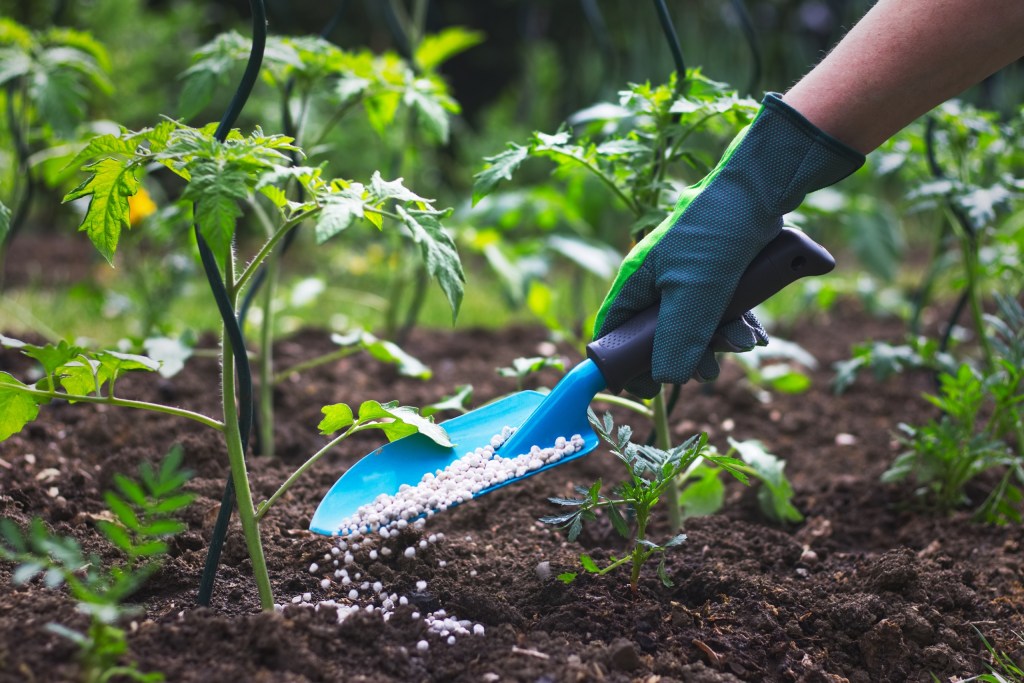There’s truly nothing like a podcast to fill the time and learn new things. While the plant world is widely available through books and videos, podcasts for gardeners also exist. Whether you’re looking for quick, daily tips about organic gardening or deeper dives into how plants shape society, there’s a podcast out there just for you. Get your earbuds ready and read on to discover our favorite gardening podcasts — you can even listen to these while you’re weeding your garden, planting new greenery, or heading to the nursery!

“Epic Gardening: Daily Growing Tips and Advice”
Kevin Espiritu from YouTube’s “Epic Gardening” channel also has a daily podcast by the same name! Espiritu, who often brings on experts and fellow gardeners, chats about outdoor planting and especially how to care for edible crops in the garden. The episodes are short and sweet, typically under 10 minutes long — you can binge multiple episodes at once or squeeze in one mini-clip a day! He also includes plenty of ASMR sounds of birds larking and water being poured, so each episode is a soothing listen!
“Humans Growing Stuff”
Mangesh Hattikudur collaborates with iHeartRadio in “Humans Growing Stuff,” a feel-good podcast that does deep dives on how plants shape our society and breaks down the science behind them. Some episodes are about the gardeners — listen to episodes about BIPOC representation in the plant community and gender stereotypes in gardening. Other weeks, you can listen to installations about houseplants in big cities and the mental health benefits of plants. Guests include artists, botanical garden staff, and even celebrities such as comic Jim Gaffigan.
“Gardening With the RHS”
The Royal Horticultural Society has a comprehensive podcast that brings in experts, scientists, and designers who discuss practical solutions to gardening problems. It puts a strong emphasis on scientifically proven techniques to help you troubleshoot issues with your garden. The episodes also offer straightforward tips on how to reduce your carbon footprint, whether it’s providing information about peat-free compost or water reduction. Plus, “Gardening With the RHS” also does fun installations about the history of plants and plant culture.
“Plant Daddy”
Indoor houseplant lovers will appreciate the thorough (yet fun and conversational) episodes that hosts Stephen Ehlers and Matthew Jackson put together about specific plant species. While they’ll have installations about general trends in the plant community, most episodes follow one topic. You’ll get episodes specifically dedicated to popular plants such as monsteras, tradescantias, and hoyas. The “Plant Daddy” hosts also do thorough investigations of more obscure plants such as the Florida ghost philodendron and anthurium clarinervium for rare plant collectors.
“The Joe Gardener Show”
Seeking out a podcast that’s strictly about gardening basics? This one’s for you. PBS host Joe Lamp’l has a podcast geared toward organic gardeners, and he’s framed it so that you don’t need to have any experience to start growing things! Some of his episodes tackle broader topics such as organic pest control and seed starting. He also has entire hour-long talks about specific garden plants, whether you’re interested in potatoes or hydrangeas. The podcast emphasizes outdoor planting, but it’ll occasionally touch on houseplants, too.

“Bloom and Grow Radio”
Beautiful indoor jungles are harder to maintain than they look. In the joyful “Bloom and Grow Radio” podcast, Maria Failla delves into the basics of houseplant care in a fun and approachable manner. She talks to plant experts about pretty much every aspect of plant care. Beginners will appreciate episodes about general plant care tips on watering, plant identification, and hydroponics.
“In Defense of Plants”
Matt Candeias has a deep curiosity for all things botanical and runs with it in this educational podcast. “In Defense of Plants” doesn’t strictly follow plant care — it’s really about how plants impact society as well as the history and science behind certain plants. Candeias devotes entire episodes to topics such as street trees, pollinators, and conservation.
“Black in the Garden”
A self-described “plantrepreneur,” host Colah B. Tawkin started “Black in the Garden” to dive into the intersection between Black culture and horticulture. Tawkin interviews Black plant enthusiasts and experts for a fun and educational plant podcast. Guests on the show include designer Carmeon Hamilton, who recently won HGTV’s “Design Star,” and Timothy Paule and Nicole Lindsey from Detroit Hives, a nonprofit devoted to building pollinator conservations in Detroit.
If you’re looking for a soothing and informative listen, there’s nothing like a gardening podcast to help you pass the time. Press play on these to learn all about the greenery around you.
Editors' Recommendations
- Everything you need to know about choosing the best rocks for landscaping
- Focus on color: Bring some sunshine to your garden with these orange plants
- Do you live in climate zone 2? Here’s what you need to know
- Could electrogardening be the way of the future?
- Climate zone 3 plants that will thrive in cool temperatures




